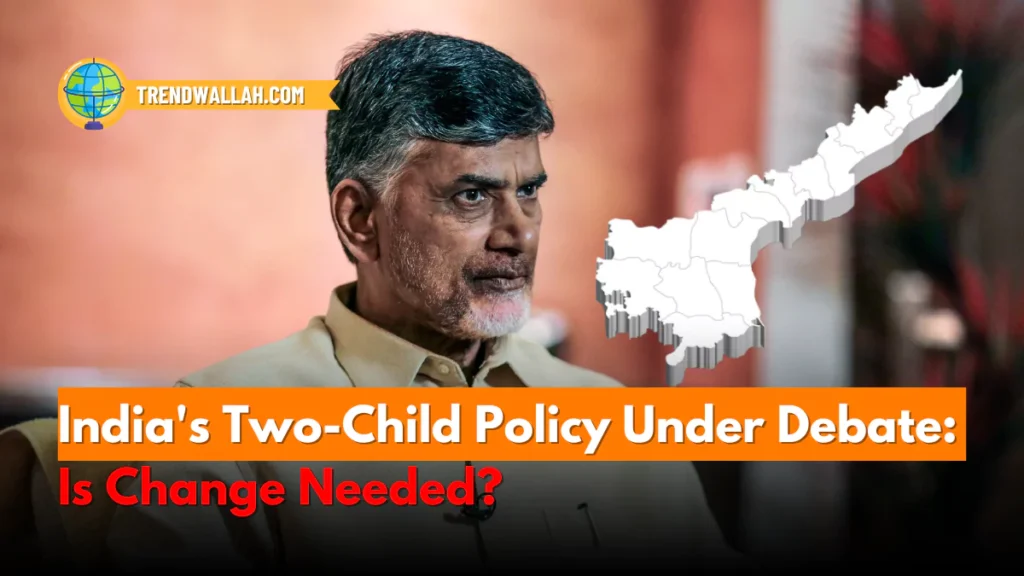
India has long followed a two-child norm as part of its family planning policies. This approach aimed to control population growth and has brought down the Total Fertility Rate (TFR) to around 2, below the replacement level of 2.1. However, recent discussions led by Andhra Pradesh Chief Minister N. Chandrababu Naidu have sparked debate on whether it is time to rethink this policy, especially considering the potential challenges posed by an aging population.
Why the Two-Child Policy is Being Questioned
- Andhra Pradesh’s New Proposal: Naidu proposed legislation encouraging families to have more children. He suggested that the current low birth rate might negatively affect southern states, potentially leading to reduced political representation in the future.
- Aging Population Concerns: States with lower TFRs, especially in the south, are beginning to experience the effects of an aging demographic. This trend may strain resources, as fewer young people will be available to support the older population.
- Electoral Representation: Naidu’s concerns also extend to political representation, as the delimitation process set for after 2026 may reduce the number of parliamentary seats in states with lower populations, affecting states like Andhra Pradesh, Tamil Nadu, and Kerala.
Population Trends Across India
| Region | TFR (Total Fertility Rate) | Population Growth Concerns |
| Southern States | Below 2.0 | Aging population, fewer young workers |
| Northern States | Around 2.4 | Maintaining younger demographic |
| National Average | 2.0 | Population growth stabilizing |
Global Context and Lessons
Countries like Japan and China have faced challenges due to declining birth rates, leading to aging populations. Pro-natalist policies in these nations have had limited success. However, solutions like promoting migration and improving economic productivity could address these demographic imbalances without solely relying on increasing birth rates.
News Summary:
- Low TFR in South India: Southern states like Andhra Pradesh have succeeded in reducing TFRs, but this has led to new concerns about an aging population.
- Political Representation Fears: Lower population growth could mean fewer Lok Sabha seats for states with lower birth rates after the 2026 delimitation process.
- CM Naidu’s Proposal: Suggests a new policy to encourage more children, particularly to address concerns of declining young population.
Global Examples: Similar challenges faced by countries like Japan and China highlight the complexity of this issue.
Also Read Latest Current Affairs 2024
India’s two-child policy promotes having no more than two children per family to control population growth.
CM Naidu of Andhra Pradesh has raised concerns that the current policy could lead to an aging population, impacting economic productivity and political representation.
An aging population can increase dependency on the working-age group, requiring more resources for healthcare and support for the elderly.
TFR measures the average number of children a woman is expected to have. A TFR below 2.1 means the population may not replace itself, leading to potential decline over time.
Countries like Japan, China, and several European nations are facing challenges due to aging populations, where a significant share of the population is elderly.
Yes, migration could provide states with lower birth rates with a younger workforce, similar to how immigration has supported economies like the US.
India currently has a large youth population, which boosts economic productivity, but this demographic advantage may decline if birth rates continue to drop.
